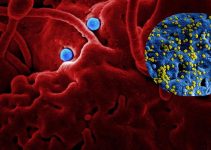Liver disease or hepatic disease is an umbrella term for a range of liver conditions that can cause various symptoms.
The most common liver diseases are cirrhosis, fatty liver, alcoholic liver disease, and drug-induced liver injury.
Symptoms depend on the type of disorder. They may include jaundice, right upper abdominal pain (near the gall bladder area), weight loss, fatigue, nausea and vomiting, itchiness all over the body, and skin mottling.
The first step in diagnosing a liver problem is identifying whether you have symptoms that could be due to something other than liver disease.
A doctor will ask you questions about your medical history and perform a physical exam to rule out other causes for your symptoms before referring you for further testing.
Early symptoms of liver disease
Liver disease symptoms are not always easy to detect. Some activities that cause this issue are long-term, chronic drinking, or an acute, short-term event that can cause them.
Some of the symptoms include:
- Easy bruising
- Jaundice (yellow skin and eyes)
- Abdominal pain
- Itchy skin
- Pale, bloody, or black stool
- Loss of appetite
- Nausea and vomiting
- Weight loss
- Extreme fatigue
- Dark urine
- Irregular bleeding
Common liver problems
Some conditions can affect your liver, but here are some of the most frequent.
Hepatitis
Hepatitis is a severe liver disease caused by the hepatitis virus. It is one of the most common causes of liver disease in the world.
Hepatitis can affect both the liver and the digestive system. This disease causes the liver to start breaking down and losing its ability to process food properly.
Moreover, it can lead to serious health problems such as cirrhosis, eventually leading to liver failure.
There are five different types of hepatitis:
Hepatitis A:
Hepatitis A is an acute viral infection caused by the hepatitis A virus. It is a severe disease that can lead to liver failure and death.
Water contaminated with infected feces is one way to spread this disease.
Also, it can be passed from an infected person to another person through contaminated food or water.
The virus is spread in droplets from the breath, sneezes, and coughing.
The symptoms of hepatitis A are similar to those of other viral infections like Hepatitis B and C: fever, fatigue, an upset stomach, loss of appetite, and dark urine.
Hepatitis B:
Hepatitis B is a virus that causes inflammation of the liver. It can be transmitted through contact with the blood or bodily fluids of an infected person.
An individual can contract hepatitis B if they are bitten by a mosquito that has been infected with the virus. However, this is not common.
The symptoms of hepatitis B include fever, fatigue, nausea, vomiting, abdominal pain, and jaundice. If it goes untreated, chronic liver disease and cirrhosis may develop over time, liver cancer, and death in severe cases.
Hepatitis C:
Hepatitis C (Hep C) is a blood-borne viral infection that attacks the liver.
A person becomes affected by having contact with the blood, semen, or other body fluids of an infected person. Also, a mother can transmit it to her child in some cases.
There are two types of Hepatitis C: acute and chronic.
The chronic type can remain dormant for years before producing symptoms, including fatigue, nausea, abdominal pain, and jaundice.
Treatment for Hepatitis C includes antiviral medications like Sovaldi and Epclusa, which are very effective at curing Hepatitis C with minimal side effects but can be expensive to purchase
Hepatitis D:
Hepatitis D is a liver disease transmitted through blood by contact with an infected person’s blood.
An infection of the virus causes hepatitis D. It is not as common as hepatitis B or C but can be more severe and lead to cirrhosis and liver cancer.
Hepatitis E:
Hepatitis E is a virus that affects the liver. It causes an acute infection and can last from 4 to 8 weeks.
The virus enters the body through the digestive tract. It causes inflammation of the liver, fever, nausea, abdominal pain, vomiting, and jaundice (yellow skin and eyes).
Symptoms of hepatitis E are similar to other types of hepatitis.
It’s also a lot less common than hepatitis A or B, transmitted through contaminated food and water.





